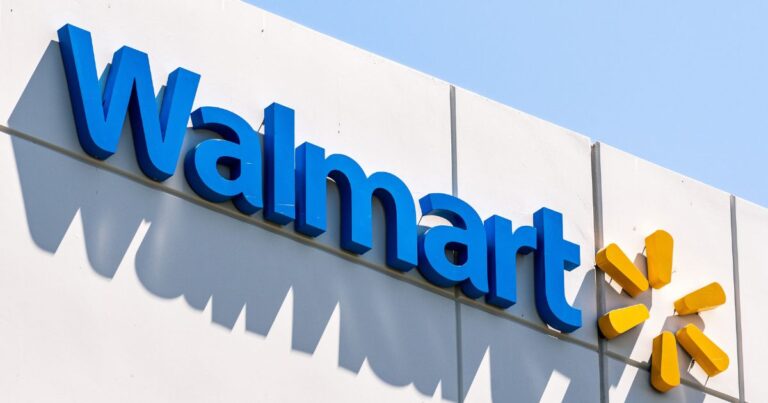Updated: May 20, 2025
From PVC-laden products to safer solutions, the retail giant has the power—and responsibility—to protect health and drive industry change.
Ten years ago, The Home Depot made headlines for phasing out phthalates in vinyl flooring—endocrine-disrupting chemicals linked to reproductive harm. It was a major win for our Mind the Store program and consumer safety. More importantly, it helped catalyze an industry-wide shift away from toxic additives and led to regulations in Washington state banning phthalates in flooring. It also showed that when a company takes the initiative to assess the hazards of its product ingredients, it can make smarter business decisions that safeguard public health while also protecting its bottom line.
Now, The Home Depot has a critical opportunity to lead once again—this time by phasing out polyvinyl chloride (PVC) plastic from packaging and building materials and scaling healthier solutions like bio-based linoleum, which is durable, safer, and made from linseed oil.
The company has already committed to reducing plastics in its products and packaging by 200 million pounds by the end of 2028— an acknowledgment of both the scale of the plastic pollution crisis and its own role in addressing it. Phasing out PVC would be a strategic and measurable way to meet—and potentially exceed—that goal, while also protecting public health and mitigating business risks.
Why now is the time for The Home Depot to act on PVC
1. PVC is polluting our bodies and our homes
PVC plastic threatens America’s health at every stage of its lifecycle, from production to use to disposal. It exposes families, workers, and frontline communities to cancer-causing vinyl chloride, toxic additives like flame retardants and heavy metals, and microplastics. These pollute our bodies and homes and contribute to the rise in chronic diseases across the country.
With building materials accounting for the largest use of PVC, it’s time for retailers like The Home Depot to step up. As the world’s largest home improvement retailer, The Home Depot has the market leverage and moral responsibility to drive transformative change toward safer materials for its customers.
2. Increasing safer options is in line with customer demand
This opportunity aligns with shifting consumer expectations across Home Depot’s key customer groups:
- Latino contractors make up a key part of Home Depot’s pro customer base—driving over 40% of revenue. Latino home improvement spending is up 80%, and three in four Latino voters support stronger regulation of toxic chemicals in plastics.
- Millennials, the largest group of homebuyers, are actively avoiding toxic chemicals and plastics: Of this group, 87% worry about plastic waste, and over 60% have changed their purchasing habits to reduce chemical exposure.
- Older women homeowners, another core demographic, are more likely to view environmental hazards as risky and are often willing to pay more for eco-friendly products.
Across all demographics, the trend is clear: consumers want safer products that don’t contribute to plastic pollution.
3. Wildfires expose the hidden dangers of PVC
Recent wildfires across California have exposed a new dimension of PVC’s risk: fire-related toxic emissions. When PVC burns, it releases hydrogen chloride gas and cancer-causing dioxins—putting firefighters, building occupants, and entire communities at risk.
With wildfires increasing, so is demand for fire-resilient, safer materials. The Home Depot is well positioned to lead by replacing PVC with safer alternatives, aided by tools like Habitable’s INFORMED guidance.
4. Sticking with PVC ignores industry actions and regulatory trends
The U.S. Plastic Pact identified PVC packaging as “problematic and unnecessary,” and many leading companies are working to eliminate it in packaging by 2025.
In addition, states like Washington, California, Massachusetts, Minnesota, and New York are considering or enacting restrictions on PVC in packaging. Some cities and states, such as New York, have also restricted PVC in specifications for government purchasing.
Rather than waiting for mandates, The Home Depot can get ahead of the curve, building consumer trust and long-term business value.
5. Public and investor concern is growing
Corporate action on PVC is not only supported by regulatory trends and voluntary industry actions—The Home Depot customers, NGOs, and investors are demanding it. Last year, we sent a letter to The Home Depot CEO Ted Decker urging action on PVC in packaging and building materials and transition to safer solutions. While the company has made progress on private-label packaging, brand-name packaging and PVC building materials represent a critical unmet opportunity.
Since we first sent a letter to Home Depot’s CEO, pressure has grown, from customers, advocates, and investors. Over 25,000 people have signed a petition launched by East Palestine resident Daren Gamble, whose community was devastated by the 2023 vinyl chloride train derailment. Supporters include Beyond Plastics, Breast Cancer Prevention Partners, Clean Water Action, Defend Our Health, Hip Hop Caucus, League of Conservation Voters, North Carolina Conservation Network, and the Plastic Pollution Coalition.
Their message is clear: The Home Depot must act now.
6. Action on PVC can improve ESG ratings
In our latest Retailer Report Card, the company received a C-, in part due to its ongoing reliance on toxic plastics and failure to advance safer alternatives.
Substituting PVC with safer materials like linoleum could improve the company’s grade and send a strong signal to investors, analysts, and customers.
7. A pivotal shareholder vote on plastics is coming this week
This week, The Home Depot investors will vote on a shareholder resolution to address plastic pollution. This is a pivotal moment for the company’s environmental leadership and financial resilience.
How The Home Depot can lead again by phasing out PVC
Here’s what The Home Depot can do right now:
- Expand its PVC phase-out to brand-name packaging
- Collaborate with suppliers to scale safer solutions like linoleum flooring
- Set a clear timeline to phase out PVC in key building materials like flooring and siding
Read our full letter to The Home Depot for detailed recommendations.
The company has led before. With public health, regulatory, and market pressures converging, now is the time to lead again.





